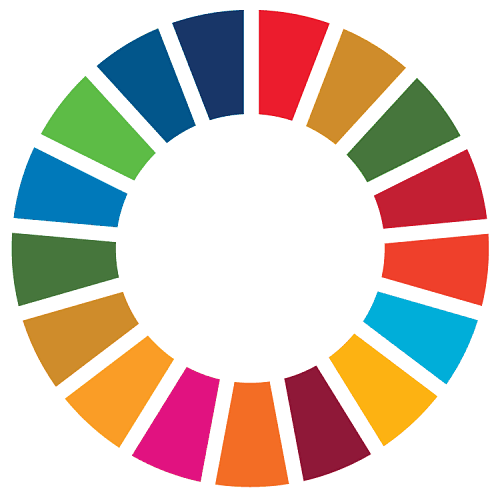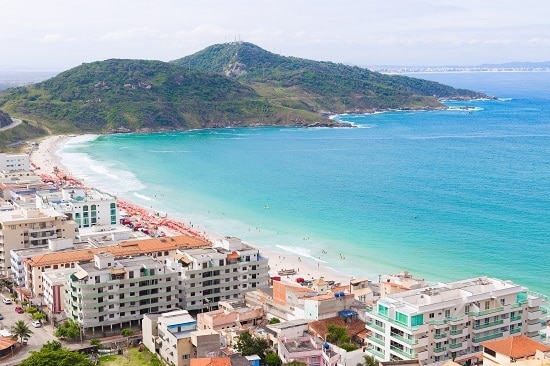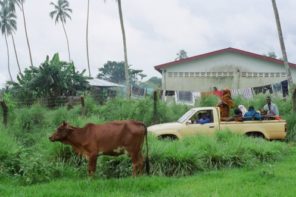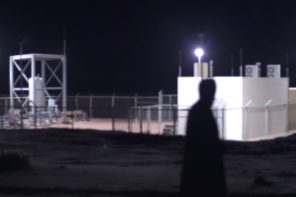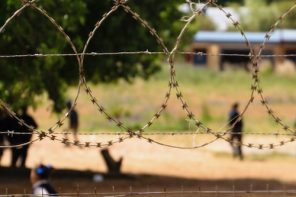Numerous studies indicate if human waste management and consumer patterns continue as they are now, then in 2050 the plastic in the world’s oceans will weigh more than fish. The Ocean Conference ended in New York City on June 9th 2017. Fiji and Sweden initiated the conference, arguing it would be vital for global powers to unify around the 14th of the UN Sustainable Development Goals, namely the Ocean and its marine resources. It is important to view the 17 UN goals as intertwined; that is,
without sustainable cities and sustainable consumption it will for example be impossible to safeguard oceans.
I have been chosen together with 28 colleagues by the Swedish government agency SIDA (Swedish International Development Aid) to be part of SIDA Alumni and represent the UN Sustainable Development Goals in Sweden. This includes holding lectures and workshops meant to teach the goals and inspire action. One of our core tasks is to show that these are global issues and that all 17 goals can only be achieved together. This post is part of communicating this mission and a continuation of Allegra’s 2014 thematic thread #Sustainability; a thread even more topical now due to the UN AGENDA 2030 targets and the increasing public debate concerning the environment. With the material from my fieldwork I aim to show how local-global come together to work against marine debris. Moreover, I illustrate the link between some of the Sustainable Development Goals by connecting how the debris ended up in the water and if real change is to be achieved why it is important to educate the public rather than just clean up the debris.
The issue with marine debris
In late 2016, I flew from Sweden to two fieldwork sites in Brazil: Rio de Janeiro and Arraial do Cabo. I was interested in how the environmental policy on the removal of marine debris, promoted by the NGO Project AWARE, was understood by local scuba divers. According to Project AWARE, the lion part of all garbage thrown on street corners, in bushes, and elsewhere inevitably end up in or in contact with water. In Rio de Janeiro this is particularly evident. The Guanabara Bay is acutely polluted. I was told by residents in Rio that much of the waste and pollutants are brought to the bay via rivers from the inlands. Newspapers have also described this, particularly during the time running up to the 2016 Olympic Games. Much of the waste comes from Rio de Janeiro itself—for example the “favelas” usually lack proper waste management systems or functioning sewers. Thus, most waste is flushed into Guanabara Bay with the rain, my interlocutors explained.
During my fieldwork I often travelled around Rio using the metro. On several occasions I noticed commercial ads that highlighted the issue of littering, and how such behaviour can result in environmental consequences. The ads usually consisted of a short cartoon video showing friends sitting at a pick-nick table, or having a barbeque in the forest. When the friends dispatched they left all their garbage on the ground. The ad showed quick slides with information on what happened with this garbage afterwards, how it became marine debris among other things. The ad concluded with showing the friends returning in order to collect and properly dispose of their waste. These ads were informative and they highlighted the issue marking social behaviour as the reason behind the problem. Although the government initiative with these ads was timely and important, from what I observed and was told by my interlocutors, it is not enough to stop the continuous pollution of the Guanabara Bay. More hands-on action, where waste is directly removed was, and still is, needed. According to my interlocutors the government of Rio had promised to clean up the Guanabara Bay before the games, by removing the debris. These cleanups never materialized. And because the waste floating around is both ugly to look at, and also dangerous, not least for marine animals that get entangled in it, it need to be removed in order to better the state of the bay.
Translating Environmental Policy into Local Action in Rio de Janeiro
Luiz is a man in his early 30s partly working as an independent PADI (Professional Association of Diving Instructors) instructor in liaison with Project AWARE. One of the core ideas of Project AWARE is to empower divers to do something for the environment with every dive. Luiz makes sure his students have been educated in the practice of removing marine debris while diving. He is also in close collaboration with one of Rio’s fishing colonies and they work together to clean beaches and water from garbage and marine debris. I learn that all garbage removed by the divers from the water is then reported to Project AWARE in order to compile the amount of marine debris collected across the globe.

Luiz (to the very right) and some of his associates and students preparing for a cleanup at Praia Velmeha, Rio de Janeiro
Cleanups are not all that Luiz and the fishermen do. They are also working with a youth prison center, located on Governor Island in Rio de Janeiro, to reforest a damaged Mangrove forest on the island. For Luiz, this is important as he tells me: “I believe that education is the key to a better tomorrow. Moreover, I believe that youth are more open minded and ready to change their ways of life than adults. Therefore I focus on educating the generation of tomorrow rather than arguing with adults of today.”
Luiz believes in education and how it leads to improved social practices making them sustainable and how it resonates with the circular idea behind the UN Sustainable Development Goals. The goals are constructed in a way that they are all interconnected. For example, if to safeguard the oceans and marine resources (goal nr. 14) is to be successful there is need for education regarding why waste management is important. Moreover, the goal for sustainable cities (nr. 11) and sustainable consumption (nr. 12) are of great importance because they are directly linked to what products become waste.
Translating Environmental Policy into Local Action in Arraial do Cabo
Arraial do Cabo is originally a small fishing village with a population just below 30,000 and has become a popular tourist destination. In 1997 the waters around Arraial do Cabo was made a marine extractive reserve granting special extractive rights to fishermen by the Brazilian government. This was to help protect the exceptionally rich marine fauna caused by upwelling as a result of a natural phenomenon. However, this has created competition for space at the pier, and in Arraial the relationship between fishermen and divers have become more hostile compared to Rio. With increasing tourism, which pays better than catching and selling fish, the fishermen have increasingly lost their slots. Local politicians have also sided with divers and tour agencies, which has caused complications in this context.
Ella, a woman in her 40s, is the owner of a popular dive center in Arraial do Cabo. She is also, as she told me herself, deeply inspired by the work of Project AWARE, although she is not officially associated with them. Her center is one of few in Arraial that conduct beach cleanups and dives to collect debris. Yet, she makes much less than what she would wish. This is due to the issue with fishermen and a slow and corrupt local government. Because the area is protected and ‘given’ to the fishermen by the national government, Ella needs the fishermen’s approval to do cleanups. Since the fishermen already feel they do not get enough space or acknowledgement, they are not very enthusiastic about Ella’s cleanups. The fishermen view these initiatives as beneficial for divers, not the community at large. Therefore Ella is only able to conduct three cleanups a year, which is far too little to make a real impact. However, she strives to make more cleanups in the future and makes sure to make the most out of the opportunities she is given to clean the water and beaches around Arraial do Cabo.
Ella told me that the local government is unwilling to assist her further because the main income in town comes from tourists enjoying the water and the beaches. In order for Ella to be able to do cleanups, parts of the beach and the water must be closed for some time. This is, according to Ella, the reason behind the lack of interest among officials. The fishermen do not support the cleanups because it gives more attention to divers and less to the fishermen, as one of the captains told me. Yet, both the argument of the officials, and that of the fishermen can be used to argue for allowing Ella to make more cleanups. This is because most tourists coming to Arraial do so because of the rich marine fauna. If the marine reserve is damaged by heavy pollution it will hurt fishermen, tour agencies, and local government drawing less tourism. One fisherman named Bob explained the dangerous development: “When I came here 30 years ago you caught fishes with every hook from the boat, nowadays half of them come up empty, another part with plastic, and only some catch fish.” A tourist who had been visiting Arraial for some years told me: “Before you could see dolphins, you could lay on the beaches and be surrounded by only sand and vegetation. These days there are no dolphins, and you need to clean up your spot on the beach before sitting down, there is too much trash laying around.”
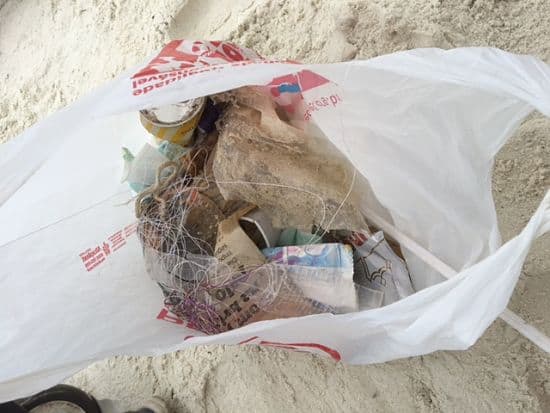
Trash I collected from the area needed to lay down my own and my kids towel on one beach in Arraial.
Both Ella and Luiz are actively working to try and spread knowledge about marine debris through education. They hold workshops, give out flyers with information, and have posters with illustrating pictures and slogans. It is possible that if the fishermen in Arraial were engaged through work in cleanups as those cooperating with Luiz in Rio are, then the possibilities for Ella to make a difference via cleanups would be much greater.
Concluding remarks
My time in Arraial allowed me to understand the importance of social practices on global concerns, such as marine debris. As an example, take the two images below, both depict the Prainha beach in Arraial.
When observing from a distance the first picture looks like any other ‘paradise’ beach in the world, but the same can be said for the space captured in the second picture. When one is looking close the issue becomes visible and so does the social practices behind the waste. To emphasise Luiz’s concerns, it is by educating the generation of tomorrow that we can make a real change for a future, where hopefully the fish will still outweigh plastic within the oceans. These practices of waste management are created and reproduced in social milieus and can be studied and understood in such. To further the global work against marine debris, and to work towards fulfilling the UN goals before 2030, it is of great importance to pay more attention to local social practices because it is with these most issues begin, and it is here the solution lies.
For a more throughout description of the events outlined above see: Rodineliussen, R. 2017. Divers Engaging Policy—Practices of Making Water.
UN-Guidelines for Use of SDG logo and 17 icons

